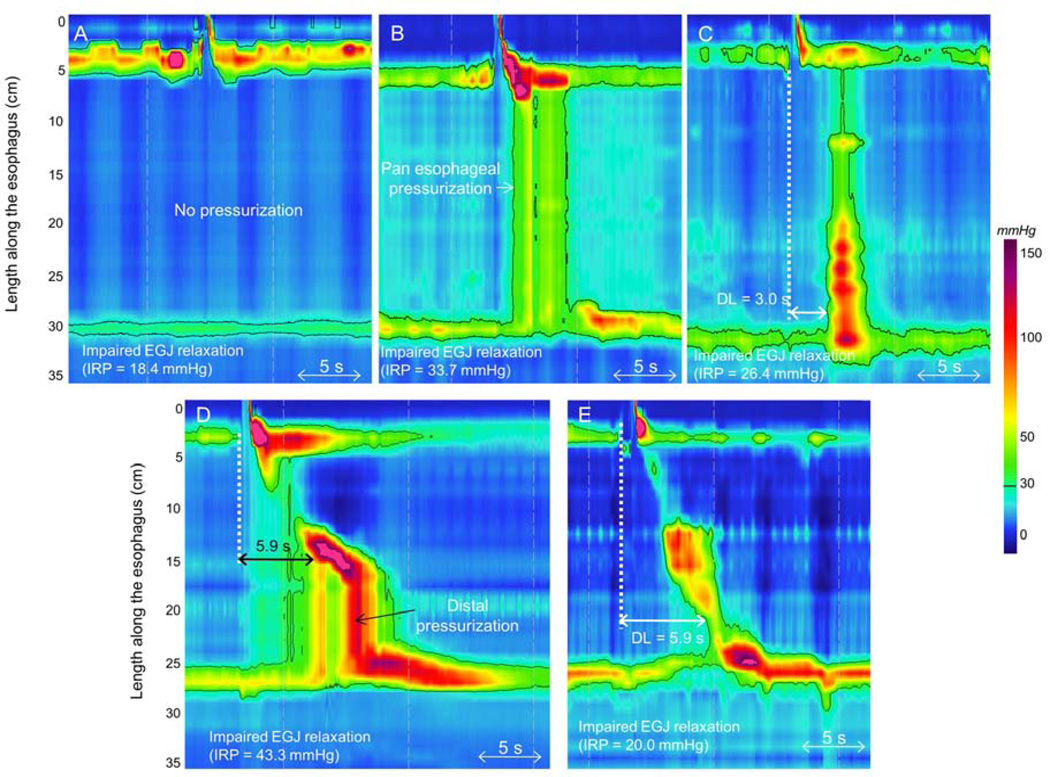Figure 5.
Disorders associated with EGJ outflow obstruction. Impaired EGJ relaxation is evident by an integrated relaxation pressure (IRP) >15 mmHg. In type I achalasia; there is no esophageal contraction and no esophageal pressurization (Panel A). Type II achalasia is characterized by panesophageal pressurization and absence of a peristaltic contraction (Panel B). In type III achalasia, there are at least 20% premature contraction, defined as DL <4.5 s. (Panel C). EGJ outflow obstruction may represent a variant of achalasia (Panel D). It might also be the consequence of a mechanical obstruction (Panel E) such as a distal esophageal stenosis in a context of esophagitis.

